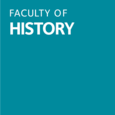The Topic of Investigation
In spite of the existence of a vast, global archive of sources, our knowledge of Eastern Christianity in the early modern period remains surprisingly limited. In part, this is a reflection of the fact that most scholars who command the requisite philological skills have tended to focus on the early medieval period or on the contemporary situation of Christians in the Middle East. What little work has been done on the early modern period remains problematic and limited in several ways. Firstly, scholars have tended to restrict themselves to local and nationally-oriented studies of particular Eastern Christian communities such as the Copts of Egypt, the Maronites of Lebanon, or the Assyrians of Iraq. While undoubtedly an important contribution to our knowledge of the period, these studies are imperfect in as much as they ignore interactions taking place between specific communities as well as between these communities and the wider world. Indeed, much of the existing scholarship emphasises the doctrinal differences that separated particular Eastern Christian churches from each other, while ignoring the fact that many of these communities shared a common vernacular in the language of Arabic and, for some, the historical and liturgical use of Syriac. Secondly, our knowledge has been misguided by an outmoded conception of Christians as a ‘second-class’, minority population in the Islamic world. This idea is more a reflection of twentieth-century realities than early modern ones, and the consequence is that Eastern Christianity has been relegated to the margins of Ottoman history. When approached at all, Eastern Christians are too often studied through the prism of ‘Islamic’ history, almost as if they made no history of their own.
This state-of-the-art is unjustifiable, not least considering that the study of Eastern Christianity has been the subject of scholarly interest since at least the eighteenth century. For more than three hundred years, bibliophiles and scholars alike have endeavoured to chart the vast literary production of Eastern Christianity in Arabic, Syriac, and Karshuni (Arabic in Syriac script). Even so, the resources available to scholars today are in complete disarray. We still lack critical editions of most works written in this period: histories, travelogues, saints’ lives, translations of European works, and much more. Catalogues of manuscript collections date back to the late nineteenth and early twentieth century, and they are unscientific, incomplete, and those that have been printed (many still circulate only in handwritten lists) were only printed in small runs, which makes it impossible for scholars to use them in a critical fashion. Moreover, the collections described in these catalogues have since been dispersed and, in some cases, destroyed as a consequence of the long history of war, turmoil, and political change in the Middle East. Faced with the tragic disappearance of this literary and cultural heritage, several digitization projects have recently sought to recover and preserve these collections in digital formats. As a result, we now possess a more complete picture of the sources than ever available to earlier generations of scholars.
The moment is ripe for writing a new history of Eastern Christianity in the early modern period. The project will draw on the momentum of several important developments over the past three decades. Firstly, the political challenges facing Middle Eastern Christians today have meant an increased call for a better understanding of their history. Secondly, a growing interest in European-Islamic exchanges has brought a growing awareness of the roles played by Eastern Christians as intermediaries between Europe and the Ottoman Empire. The result has been an exciting rediscovery of the importance of Eastern Christianity to wider narratives in European history such as the Protestant and Catholic Reformations, the Enlightenment, and global trade networks. Thirdly, the rise of global history as a framework for thinking about the past has led scholars to emphasise the roles of diaspora groups, gens de passage, and go-betweens who lived and worked between multiple societies. Taken together, these developments have contributed to the emergence of an impressionistic but very exciting view of the place of Eastern Christianity in the early modern world, one that demands further research and study in a systematic way.



